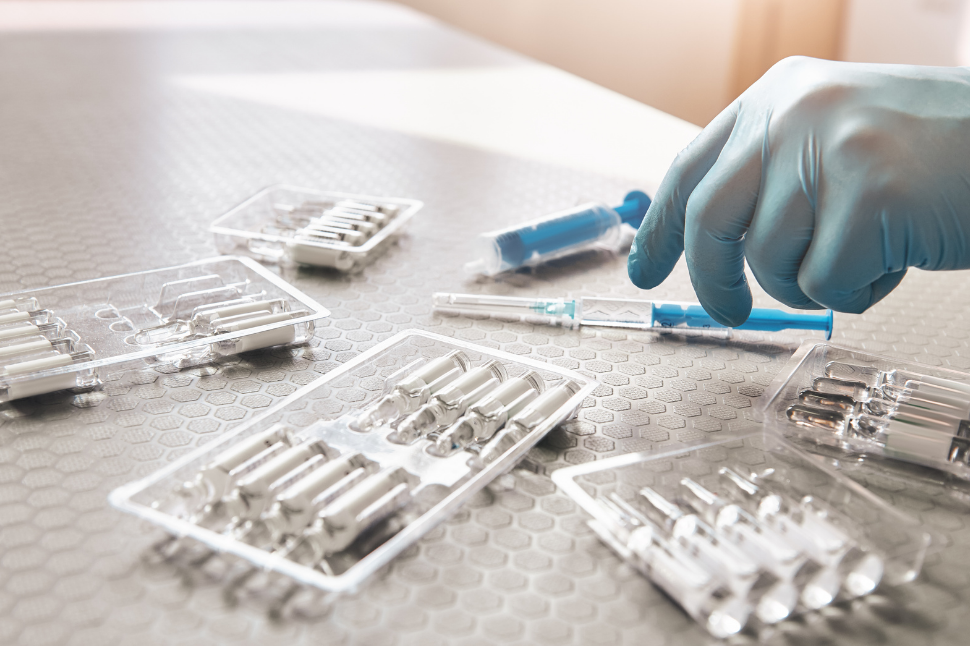Chemical Immobilization Equipment: Remote Injection Equipment

Since the remote capture of wild animals involves a substantial investment in time, effort and money, remote injection systems must be efficient and reliable.1 Precision, and therefore the capability of the operator, are of crucial importance, since there is usually only one chance to hit a target animal. A thorough understanding of the equipment and the anesthetics employed, as well as training in wildlife chemical immobilization, are important to prevent failures and mishaps.1
Types of Remote Injection Equipment
Remote injection (or remote delivery) systems for the chemical immobilization of free-ranging animals consist of various types of projection devices, commonly known as dart guns. These are commercially available in rifle and pistol configurations and employ either powder-charged blank cartridges, compressed CO2 or compressed air.2 Some of the well-known manufacturers of remote injection equipment are Pneu-dart, Dan-Inject and Teledart.
Dart guns that use CO2 or compressed air have a shorter range shorter than those of powder-charged equipment. Range can also be impacted by the dart size being used. Compressed-air systems have an effective range of up to 50 meters, while CO2 projectors can deliver a dart up to 70 meters. Powder-charged systems can deliver darts at distances up to 120 meters, although there is a higher risk for impact injury with such systems.2 Remote injection equipment is typically used from a standing position on the ground, from a ground-based vehicle or from a helicopter.
Delivery Equipment (Darts/Syringes)
The darts used for chemical immobilization themselves consist of five parts:
- Needle
- Syringe barrel
- Plunger
- Injection media (drugs)
- Tailpiece
Dart syringes are usually made of aluminum or plastic, and are typically not interchangeable between projection system types. Aluminum darts are more resistant to damage than plastic darts. Additionally, both reusable and disposable darts are available. There are several different mechanisms that can be used to advance the dart plunger for injection of a drug once the dart has impacted an animal. These are usually chemically-based, or employ mechanical triggers.
Interested in learning more about safe capture? The San Diego Zoo now offers courses in safe capture techniques and best practices. Learn reliable, safe, and effective techniques for the species you work with and the scenarios you encounter!
2Smith, A. Remote injection systems for exotic animals. Proc TNAVC 9:716-718, 1995.
3Arnemo, J., Kreeger, T. (2018). Handbook of Wildlife Chemical Immobilization 5th Ed. Sunquest Publishing, 2007, 432 pages.
About NexGen Pharmaceuticals
NexGen Pharmaceuticals is an industry-leading veterinary compounding pharmacy, offering sterile and non-sterile compounding services nationwide. Unlike other veterinary compounding pharmacies, NexGen focuses on drugs that are difficult to find or are no longer available due to manufacturer discontinuance or have yet to be offered commercially for veterinary applications, but which still serve a critical need for our customers. We also specialize in wildlife pharmaceuticals, including sedatives and their antagonists, offering many unique options to serve a wide array of zoo animal and wildlife immobilization and anesthesia requirements.
Our pharmacists are also encouraged to develop strong working relationships with our veterinarians in order to better care for veterinary patients. Such relationships foster an ever-increasing knowledge base upon which pharmacists and veterinarians can draw, making both significantly more effective in their professional roles.
Disclaimer
The information contained in this blog post is general in nature and is intended for use as an informational aid. It does not cover all possible uses, actions, precautions, side effects, or interactions of the medications shown, nor is the information intended as medical advice or diagnosis for individual health problems or for making an evaluation as to the risks and benefits of using a particular medication. You should consult your veterinarian about diagnosis and treatment of any health problems. Information and statements have not been evaluated by the Food and Drug Administration ("FDA"), nor has the FDA approved the medications to diagnose, cure or prevent disease. Medications compounded by NexGen Pharmaceuticals are prepared at the direction of a veterinarian. NexGen Pharmaceuticals compounded veterinary preparations are not intended for use in food and food-producing animals.
NexGen Pharmaceuticals, LLC does not recommend, endorse or make any representation about the efficacy, appropriateness or suitability of any specific dosing, products, procedures, treatments, services, opinions, veterinary care providers or other information that may be contained in this blog post. NEXGEN PHARMACEUTICALS, LLC IS NOT RESPONSIBLE NOR LIABLE FOR ANY ADVICE, COURSE OF TREATMENT, DIAGNOSIS OR ANY OTHER INFORMATION, SERVICES OR PRODUCTS THAT YOU OBTAIN THROUGH THIS BLOG POST.



